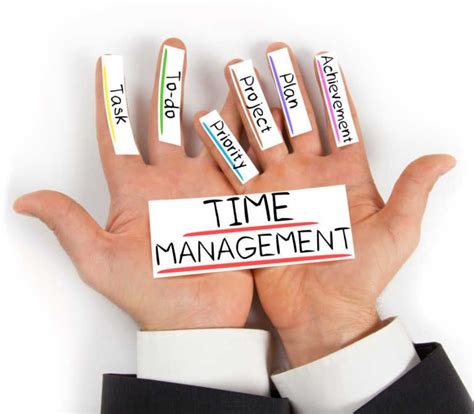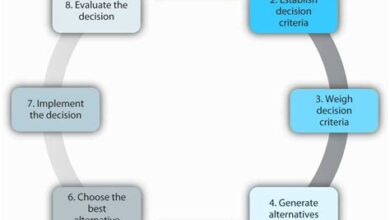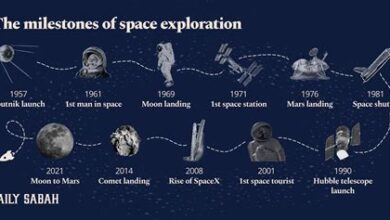Time Management Techniques for a More Efficient Life

Unlock a more efficient life through effective time management. This blog post explores why mastering time management skills is crucial in today’s fast-paced world. Learn to identify common time wasters and prioritize tasks effectively to maximize your productivity. We’ll delve into proven time management techniques, offering practical strategies you can implement immediately to enhance your output. Finally, discover actionable methods to maintain long-term efficiency, ensuring you stay on top of your goals and make the most of your valuable time. Start your journey to better time management today!
Understanding The Importance Of Effective Time Management Skills
In today’s fast-paced world, mastering time management is not just beneficial; it’s essential for achieving personal and professional success. The ability to effectively allocate your time directly impacts your productivity, stress levels, and overall quality of life. Without proper time management, you may find yourself constantly struggling to meet deadlines, feeling overwhelmed by your responsibilities, and missing out on opportunities for growth and relaxation.
Effective time management is a critical skill that enables individuals to accomplish more in less time. It involves planning, organizing, and prioritizing tasks to make the most of the available hours. When done correctly, time management allows you to focus on what truly matters, reducing wasted effort and increasing efficiency. It’s about working smarter, not harder, to achieve your goals.
| Skill | Description | Benefit |
|---|---|---|
| Planning | Creating a roadmap for your tasks and activities | Reduces uncertainty and improves focus |
| Prioritization | Identifying and focusing on high-impact tasks | Ensures critical tasks are completed first |
| Organization | Structuring your workspace and information | Minimizes distractions and saves time |
| Delegation | Assigning tasks to others when appropriate | Frees up time for more important activities |
The advantages of developing strong time management skills extend far beyond the workplace. From managing personal finances to maintaining a healthy work-life balance, these skills are universally applicable. By taking control of your time, you can reduce stress, improve your mental health, and create more space for the activities you enjoy. Ultimately, effective time management empowers you to live a more balanced and fulfilling life.
- Benefits of Effective Time Management:
- Increased Productivity: Accomplish more in less time.
- Reduced Stress: Feel more in control and less overwhelmed.
- Improved Work-Life Balance: Create more time for personal activities.
- Better Decision-Making: Allocate time for thoughtful consideration.
- Enhanced Goal Achievement: Stay focused on your objectives.
Many people find that once they start implementing time management techniques, they not only get more done but also experience a greater sense of accomplishment and well-being. It’s about consciously making choices about how you spend your time and aligning those choices with your priorities. This proactive approach to time management is the key to unlocking your full potential and living a more efficient and purposeful life.
The key is not to prioritize what’s on your schedule, but to schedule your priorities. – Stephen Covey
Identifying Time Wasters And Prioritizing Tasks Effectively
Effective time management isn’t just about doing more; it’s about doing the right things. Before you can optimize your schedule, it’s crucial to identify the activities that are stealing your precious time and learn how to prioritize tasks that truly matter. This involves a deep dive into your daily habits and a willingness to make changes.
Common Time Wasters
Many of us are unknowingly sabotaged by common time wasters. Recognizing these culprits is the first step toward reclaiming your day. These distractions can range from excessive social media use to unproductive meetings. It’s about being honest with yourself about where your time is actually going.
To better understand where your time is being spent, consider tracking your activities for a few days. This awareness will help you identify patterns and make informed decisions about cutting back on less important tasks. The key is to become mindful of how you allocate your time.
| Time Waster | Description | Potential Solution |
|---|---|---|
| Excessive Social Media | Spending too much time browsing social media platforms. | Set time limits or use website blockers. |
| Unnecessary Meetings | Attending meetings that are unproductive or irrelevant. | Decline attendance if not essential or request an agenda beforehand. |
| Procrastination | Delaying important tasks, often due to fear or discomfort. | Break tasks into smaller steps and set realistic deadlines. |
| Interruptions | Being frequently interrupted by emails, calls, or colleagues. | Designate specific times for checking emails and communicate your need for uninterrupted focus. |
The Eisenhower Matrix
Once you’ve identified your time wasters, you need a system for prioritizing tasks. The Eisenhower Matrix, also known as the Urgent-Important Matrix, is a powerful tool for making these decisions. It categorizes tasks into four quadrants based on their urgency and importance. This method helps you focus on what truly matters and avoid getting bogged down in trivial activities.
The matrix helps you differentiate between tasks that contribute to your long-term goals and those that demand immediate attention but may not be as significant. This distinction is critical for effective time management, as it allows you to allocate your time and energy more strategically.
Steps to Prioritize Tasks:
- List all your tasks.
- Assess each task’s urgency and importance.
- Categorize each task into one of the four quadrants (Urgent/Important, Not Urgent/Important, Urgent/Not Important, Not Urgent/Not Important).
- Focus on tasks in the Urgent/Important quadrant first.
- Schedule time for tasks in the Not Urgent/Important quadrant.
- Delegate or minimize tasks in the Urgent/Not Important quadrant.
- Eliminate tasks in the Not Urgent/Not Important quadrant.
Applying the Pareto Principle
The Pareto Principle, also known as the 80/20 rule, states that roughly 80% of effects come from 20% of causes. In the context of time management, this means that 80% of your results likely come from 20% of your efforts. Identifying and focusing on those crucial 20% can significantly boost your productivity.
By focusing on the vital few tasks that yield the greatest results, you can avoid spreading yourself too thin and maximize your impact. It’s about working smarter, not harder. Learning how to apply the Pareto Principle can free up time and energy, allowing you to focus on what truly matters.
The Pareto principle states that for many outcomes, roughly 80% of consequences come from 20% of causes (the “vital few”).
Implementing Proven Techniques For Enhanced Productivity
To truly master time management, it’s not enough to simply identify time wasters and prioritize tasks. The next crucial step involves implementing proven techniques that can significantly enhance your productivity. These techniques provide structure, focus, and a roadmap for making the most of your available time. By integrating these methods into your daily routine, you can experience a tangible increase in efficiency and a greater sense of control over your schedule.
One of the most effective ways to boost productivity is by leveraging technology and various organizational tools. From digital calendars and task management apps to specialized software designed for specific tasks, these resources can streamline your workflow and minimize wasted time. Experiment with different tools to find the ones that best suit your individual needs and preferences. Remember, the goal is to simplify your processes and create a system that supports your time management efforts.
Productivity Techniques:
- Pomodoro Technique: Work in focused 25-minute intervals with short breaks in between.
- Time Blocking: Allocate specific blocks of time for particular tasks or activities.
- Eat the Frog: Tackle your most challenging task first thing in the morning.
- The Two-Minute Rule: If a task takes less than two minutes, do it immediately.
- Eisenhower Matrix: Prioritize tasks based on urgency and importance (urgent/important, not urgent/important, urgent/not important, not urgent/not important).
Another important technique is to cultivate a focused and distraction-free work environment. Minimize interruptions by turning off notifications, silencing your phone, and creating a dedicated workspace where you can concentrate without being disturbed. Communicate your need for uninterrupted time to colleagues and family members, and establish clear boundaries to protect your productivity. Remember that even small distractions can significantly impact your focus and efficiency, so proactively manage your environment to minimize these interruptions.
| Technique | Description | Benefits |
|---|---|---|
| Pomodoro | Work in 25-minute intervals, followed by a 5-minute break. After four pomodoros, take a longer break (15-20 minutes). | Improved focus, reduced mental fatigue, enhanced productivity. |
| Time Blocking | Schedule specific blocks of time for dedicated tasks, treating your day like a series of appointments. | Increased structure, better allocation of time, minimized multitasking. |
| Eisenhower Matrix | Categorize tasks based on urgency and importance, prioritizing those that are both urgent and important. | Clearer priorities, reduced stress, improved decision-making. |
| Two-Minute Rule | If a task takes less than two minutes to complete, do it immediately instead of postponing it. | Reduced procrastination, streamlined workflow, increased efficiency. |
Finally, it’s essential to regularly evaluate and refine your time management strategies. What works for one person may not work for another, and what works today may not work tomorrow. Continuously experiment with different techniques, track your progress, and make adjustments as needed. Be willing to adapt your approach based on your individual needs and circumstances, and don’t be afraid to seek out new strategies and tools that can help you improve your efficiency. By embracing a continuous improvement mindset, you can unlock your full potential and achieve even greater levels of productivity.
Okay, I will create the content section based on your instructions. Here is the content: html
Actionable Strategies To Maintain Long-Term Efficiency
Sustaining efficiency over the long term requires more than just initial enthusiasm; it demands consistent effort and adaptation. Mastering time management is not a one-time achievement but an ongoing process. To truly embed efficient practices into your daily life, it’s essential to develop strategies that can withstand the test of time and adapt to changing circumstances. This involves cultivating habits and mindsets that support productivity and prevent burnout.
One of the key elements of long-term efficiency is the ability to reflect and adjust. Regularly reviewing your time management techniques allows you to identify what’s working and what isn’t. This reflective process ensures that your methods remain effective as your priorities and responsibilities evolve. It also helps you fine-tune your approach, making incremental improvements that compound over time.
Actionable Steps for Long-Term Efficiency:
- Regularly review your goals: Ensure they still align with your values and aspirations.
- Schedule time for planning: Dedicate specific slots for organizing tasks and strategizing.
- Automate repetitive tasks: Use tools and technology to streamline routine activities.
- Delegate when possible: Offload tasks that can be effectively handled by others.
- Prioritize self-care: Prevent burnout by incorporating rest and relaxation into your routine.
- Continuously learn and adapt: Stay informed about new productivity techniques and tools.
Building resilience is also crucial for maintaining long-term efficiency. Unexpected challenges and setbacks are inevitable, but how you respond to them can significantly impact your overall productivity. Developing coping mechanisms and strategies for bouncing back from disruptions ensures that you can stay on track even when facing adversity. Remember, consistency is key to making time management a sustainable practice.
To provide a clearer picture of how different strategies can contribute to long-term efficiency, consider the table below:
| Strategy | Description | Benefits |
|---|---|---|
| Time Blocking | Allocate specific time slots for particular tasks. | Reduces multitasking and improves focus, leading to higher quality work. |
| Prioritization Techniques | Using methods like Eisenhower Matrix (urgent/important) to rank tasks. | Ensures that critical tasks are addressed first, preventing crises and delays. |
| Batching Similar Tasks | Grouping similar activities together to minimize context switching. | Enhances efficiency by reducing mental overhead and improving workflow. |
| Regular Breaks | Taking short breaks to rejuvenate. | Prevents fatigue, maintains focus and boosts productivity. |
Ultimately, the secret to long-term efficiency lies in creating a sustainable system that integrates seamlessly into your lifestyle. It’s about finding the right balance between productivity and well-being, ensuring that you can continue to perform at your best without sacrificing your health or happiness. By implementing these time management strategies and continuously refining your approach, you can unlock your full potential and achieve lasting success.



